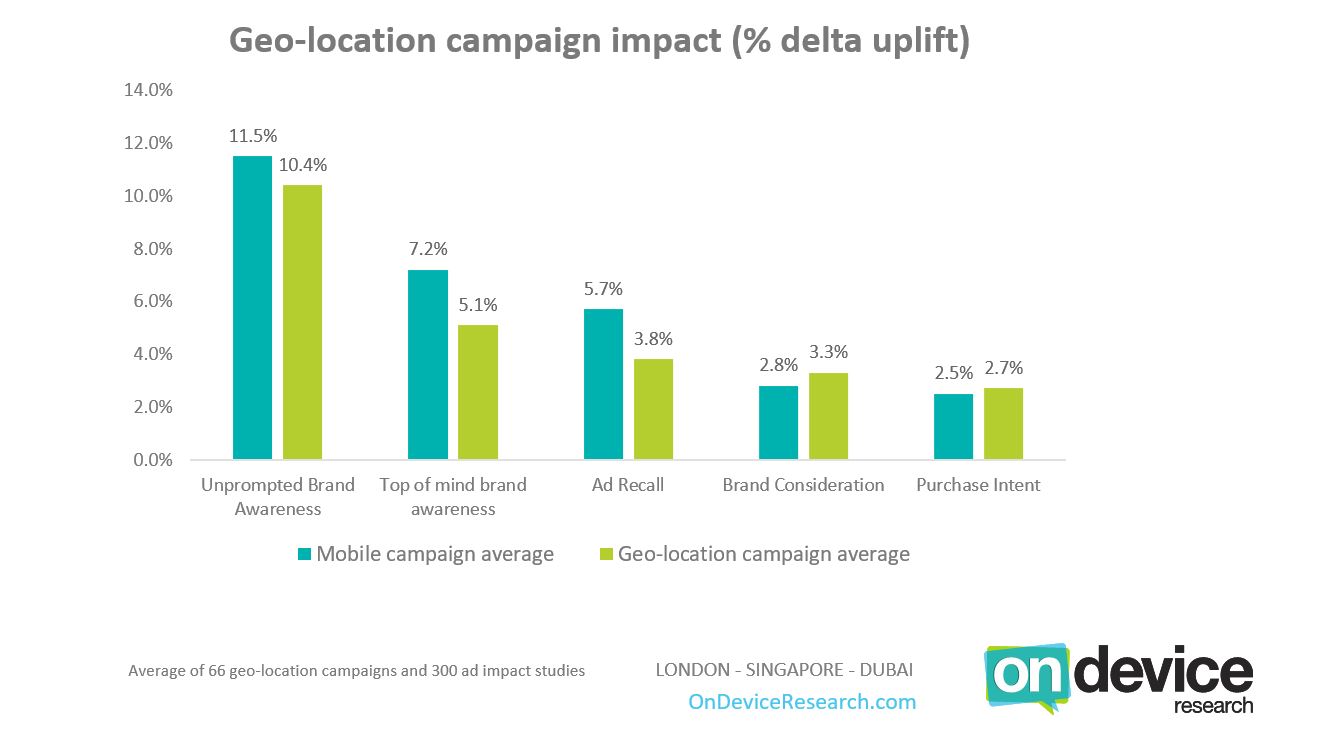An analysis of 66 geo-targeted campaigns by On Device Research has revealed that they do more than simply drive store footfall and outperform the industry average for both brand consideration and purchase intent.
Geo-location data is increasingly sitting at the heart of mobile brand strategy. In a recent survey of nearly 550 marketers by WARC and the Mobile Marketing Association, nearly three quarters of respondents revealed that the primary mobile technology that their clients intend to take advantage of in 2017 is location data, a 17% increase on 2016 and a considerable boost to advocates of geo-targeted ad campaigns.
The opportunity afforded by hyper-targeted, personalised and near real-time data driven ads which can be delivered to consumers in a series of micro-moments when they are at their most ad receptive is a highly attractive proposition for advertisers. Yet at the same time, the common perception is that geo-location targeting is solely about driving store traffic and footfall (something that mobile is demonstrably effective at given the 35.2% average uplift in store footfall that we have seen across the campaigns we have tested).
In reality however, having an impact on short term sales metrics and a long term impact on brand metrics are not mutually exclusive activities, as revealed by an analysis of 66 geo-targeted mobile campaigns measured by On Device Research.While geo-location campaigns are positive drivers of brand awareness, when it comes to brand consideration and purchase intent geo-targeting campaigns are really winning out.
Typically it is harder to shift the dial on lower funnel metrics, but with geo-location campaigns on average driving a 3.3% delta uplift in brand consideration (vs a mobile campaign average of 2.8%), the case for deploying third party location data for brand campaigns is hard to ignore. The physical availability of a product has a huge impact on the effectiveness of brand building efforts: the ability to target consumers when they are in close proximity to where products are physically available undoubtedly drives the lower funnel multiplier effect seen in our norms database.
As Facebook’s Sheryl Sandberg said at this year’s DMexco conference in September, “The marketing funnel itself is collapsing. It used to take time to go from research to discovery to awareness all the way to a purchase. But now you have digital and mobile that is happening faster than ever.” Nowhere is this trend more true than with geo-data which can shift the dial on short term sales and longer term brand KPIs simultaneously.

